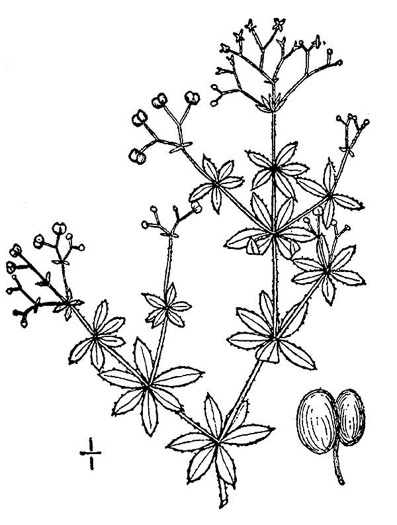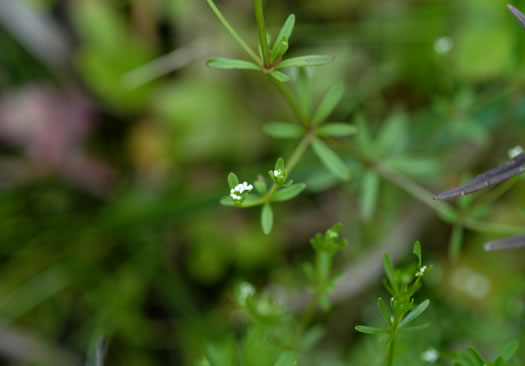Spermatophytes (seed plants): Angiosperms (flowering plants): Eudicots: Core Eudicots: Asterids: Lamiids: Gentianales
WEAKLEY'S FLORA OF THE SOUTHEASTERN US (4/24/22):
Galium asprellum
FAMILY
Rubiaceae
Go to FSUS key
Dig deeper at SERNEC, a consortium of southeastern herbaria.
Read more about Rough Bedstraw at Vascular Plants of North Carolina.
SYNONYMOUS WITH
PLANTS NATIONAL DATABASE:
Galium asprellum
FAMILY
Rubiaceae
SYNONYMOUS WITH VASCULAR FLORA OF THE CAROLINAS (Radford, Ahles, & Bell, 1968) 173-10-014:
Galium asprellum FAMILY Rubiaceae
SYNONYMOUS WITH Manual of the Southeastern Flora (Small, 1933, 1938)
Galium asprellum
COMMON NAME:
Rough Bedstraw
To see larger pictures, click or hover over the thumbnails.
Patrick D. McMillan pdmgasprellum_lvl
June Avery County NC
Leaves in whorls of 6. Principal leaves narrowly elliptic, up to 0.75" long, per Wildflowers of the Southern Mountains (Smith, 1998).
WEAKLEY'S FLORA OF THE SOUTHEASTERN US (4/24/22):
Galium asprellum
FAMILY
Rubiaceae
SYNONYMOUS WITH
PLANTS NATIONAL DATABASE:
Galium asprellum
FAMILY
Rubiaceae
SYNONYMOUS WITH
VASCULAR FLORA OF THE CAROLINAS (Radford, Ahles, & Bell, 1968) 173-10-014:
Galium asprellum
FAMILY
Rubiaceae
SYNONYMOUS WITH
Manual of the Southeastern Flora (Small, 1933, 1938)
Galium asprellum
If a search such as "Carex leptalea var. leptalea" doesn't deliver the results you want, try "Carex leptalea".
Or, to minimize chances of a misspelling, try just "Carex le".
Less is more: If "pencil flower" doesn't deliver the results you want, try "pencil".




